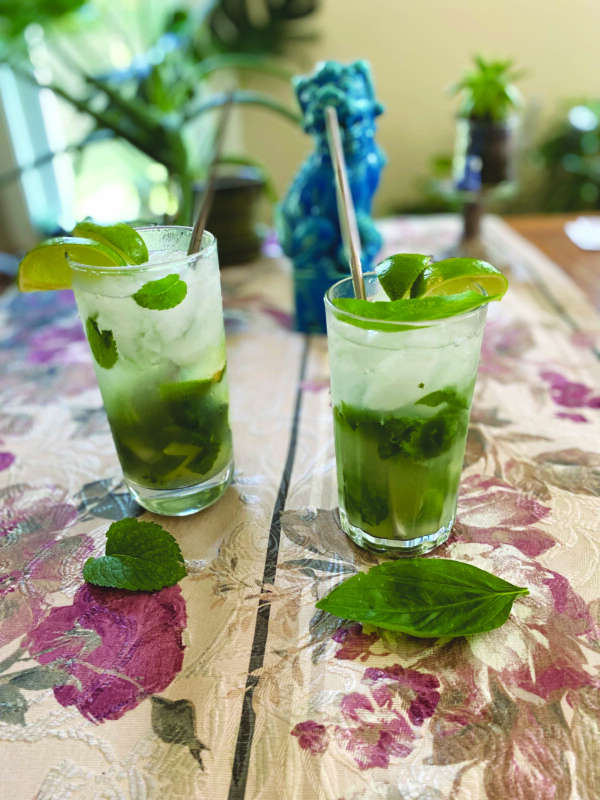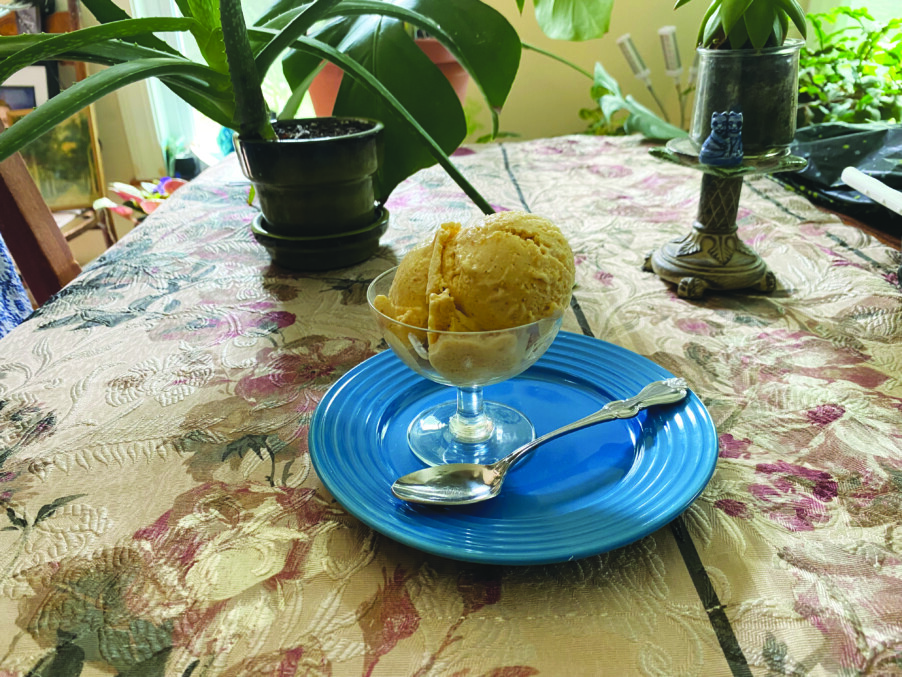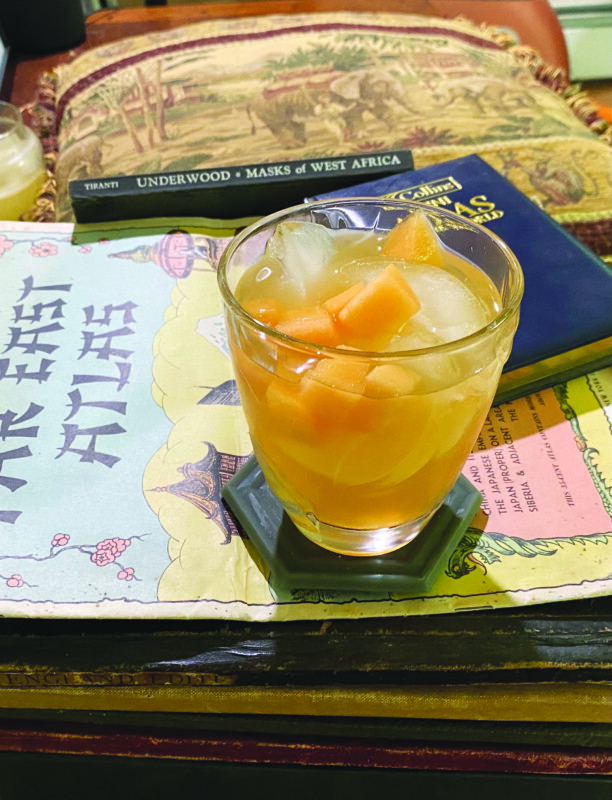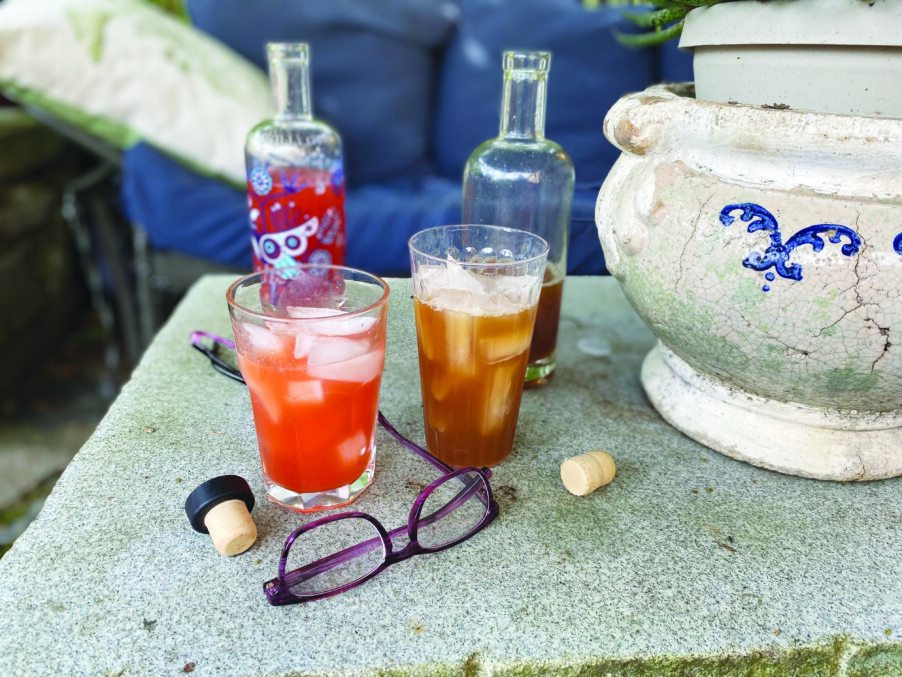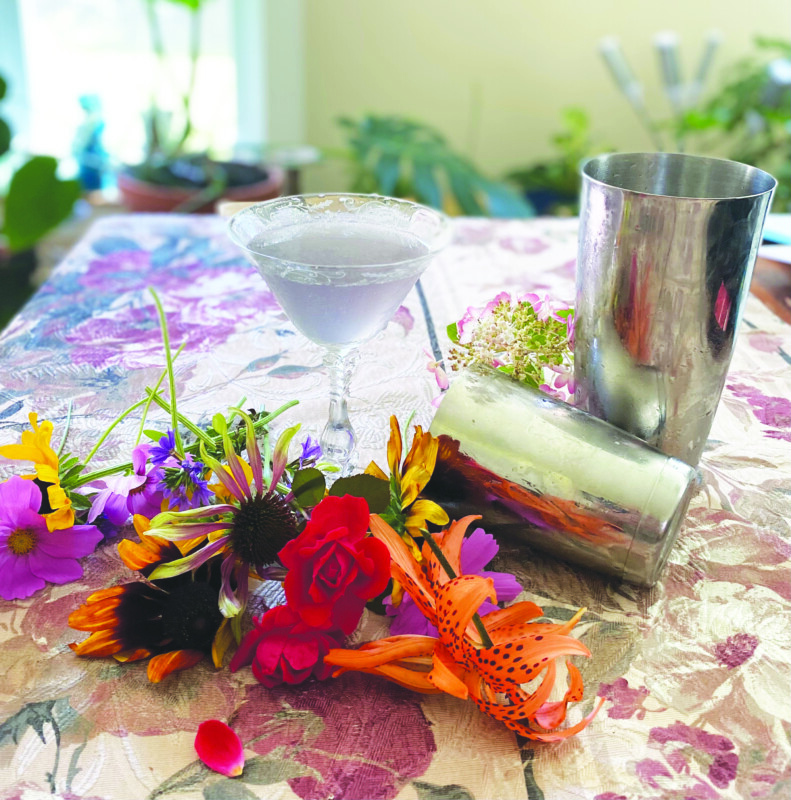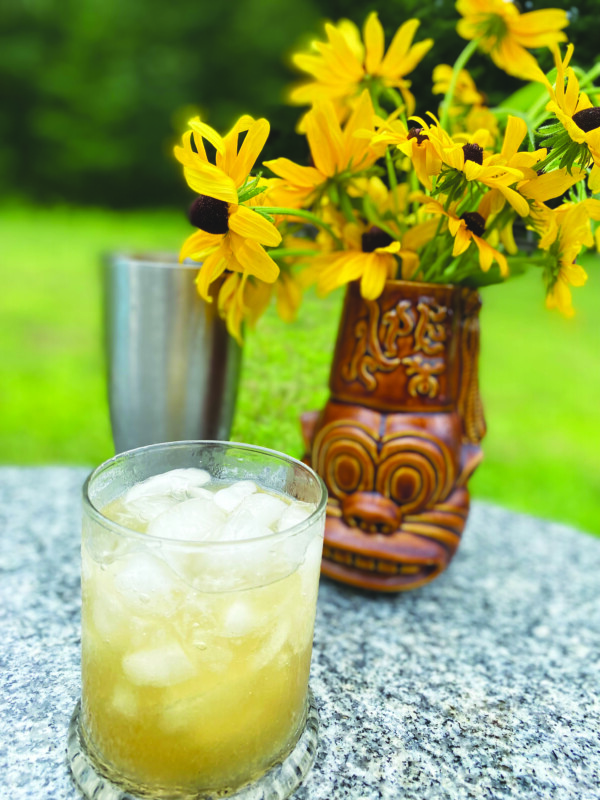Yes, you’d heard rumors about mint: “Be careful, or it will take over your garden.” “No, really, it’s surprisingly aggressive.” “Mint is the Tribble of the plant world.”
So you were careful. Once you put in a couple of raised beds — that’s where you planted the mint.
But the surprise was the basil. You like basil well enough, and who doesn’t like a nice pesto? The plants you picked up at the grocery store were pretty small, so seven or eight plants seemed like a reasonable number.
Ultimately, it turns out that the reason the mint stayed under control is that it was scared of the basil. It started off slowly, and everything seemed fine but then it started growing faster and faster and there’s only so much pesto a human family can eat and oh my god it’s taken over all the raised beds and now you’re scared of the basil and what in the name of Little Green Apples are are you going to do!?
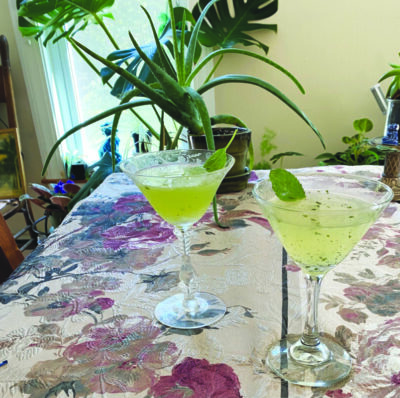
First of all, take a deep breath, and maybe eat a popsicle.
Secondly, identify the problem: You have a lot of mint and too much basil and you don’t know what to do with it.
Thirdly, you need a drink.
So, in an act of service journalism, let’s compare and contrast two classic minty cocktails, and the same recipes with basil in place of the mint.
(It will be alright. The herb police are not going to come crashing through your window if you just throw some of this away.)
Southside Cocktail
6 mint leaves (1.5 grams) or 2 large basil leaves (2 grams)
2 ounces dry gin
½ ounce fresh squeezed lemon juice
½ ounce fresh squeezed lime juice
1 ounce simple syrup
more herbs for garnish
Thoroughly muddle the mint or basil in the bottom of a cocktail shaker.
No, more than that.
That’s about right. Now add the rest of the ingredients and some ice, and shake until it is blisteringly cold.
Strain into a chilled cocktail glass, and sip to Herb Alpert’s A Taste of Honey.
A classic Southside is only very slightly sweet, and I like it a little sweeter, so I’ve doubled the amount of simple syrup. (If that sounds like a lot, we’re only talking about an extra half ounce.) This is a grownup drink that lets the herb in question shine through. Winner: by a nose, the basil version. It’s refreshing and delicious, with just a hint of Italy.
Mojito
12 sprigs (3 grams) fresh mint or 4 large leaves (4 grams) fresh basil
1 lime, cut into 6 wedges
½ ounces simple syrup
lots (a technical term) of crushed ice
2 ounces white rum
3-4 ounces plain seltzer
In the bottom of a tall glass, muddle the herb of your choice, and four of the lime wedges. Be careful; the lime won’t like this and will spend its dying breath trying to squirt you in the eye.
Add the simple syrup and crushed ice. Stir.
Add the rum, and top off with seltzer. Stir again. Garnish with the two remaining lime wedges.
Sip while watching the waves from your cliffside cabaña (pending availability).
If you’ve never had a mojito, it’s a good thing you’re remedying that now. It is delicious and deceptively light. Lime and rum go well with all the ingredients and let the herbiness of your mint or basil shine through. This drink’s reputation for being dangerously drinkable is well-deserved.
Winner: the traditional mint; classics are classics for a reason. The basil version is fine, and if you weren’t drinking the two side by side, you would be perfectly happy with it, but the mint shines through in a way that makes the whole drink sparkle.
John Fladd is a veteran Hippo writer, a father, writer and cocktail enthusiast, living in New Hampshire.
Featured photo: Mojito. Photo by John Fladd.

